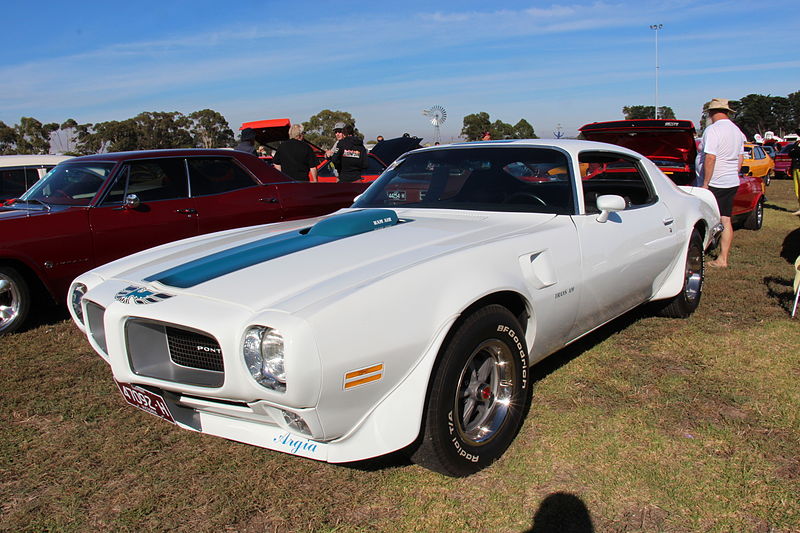1970 Pontiac Firebird Trans Am

source: Wikimedia
Just as Dodge threw their hat into the ring to beat the Mustang, Pontiac responded in kind. In 1967, the carmaker introduced their own pony car, the classic Firebird. A beautiful coupe in its own right, the Firebird mimicked many of the design elements of the platform-sharing Camaro. Its coke bottle body and general aesthetic meant it boasted few original design elements, though that would change in 1970.
The second generation of the Firebird birthed an entirely original car with its own look. Available in four trims, the new Firebird had a longer arrow-like body, pointy front fascia, and aggressively sloped teardrop rear end that terminated with a ducktail spoiler and Kammback rear end. The most notable iteration of the Firebird was the fire-breathing, corner-crushing Trans Am.
This souped-up Firebird package debuted with functional spoilers and vents wherever Pontiac’s engineers could throw ‘em, and improved steering components and suspension upgrades allowed it to handle road courses and tight turns with ease – a rare and often overlooked performance standard in the era of going fast in straight lines.
That was all thanks to the padded Formula steering wheel, which directed a quick 12.1:1 variable-ratio power steering unit. Stiffer springs and big front and rear sway bars kept the body composed in hard corners, and F60x15 wheels made sure the car stuck. Helping meet the apex without crashing were large power front disc brakes and 9.5” rear drums.

source: Flickr
More impressive still was the incorporated air extractors and spoilers. Pontiac advertised the car created an extra 50 pounds of downforce at speed, ensuring traction was there when needed most. The carmaker claimed equal downforce was made at the rear thanks to the big ducktail spoiler.
Critics were impressed. Sports Car Graphic commented, “Overall handling feel… was as near to a front engine race car as we have ever driven.”
The Trans Am did more than just handle well. Its Ram Air-equipped 400 motor netted the car impressively low 14’s at the strip. A rare option, the Ram Air IV cars featured bigger ports, improved heads, polished valves, and an aluminum intake manifold that allowed the car to make over 370 horses. An even rarer trim, the Ram Air V, was produced on special order only and featured solid lifters and tunnel-ported heads, making around 500 horses.
These big breathers needed plenty of air, so Pontiac incorporated a rear-facing shaker scoop. Handling all that power was a four-speed trans with Hurst shifter, though a Turbo Hydra automatic was available. The four-speed allowed buyers to opt for tire-squealing 3.73 gears. For such a car to provide this level of power and handling at a time when the straight line mattered most, it earns its spot on our list.
